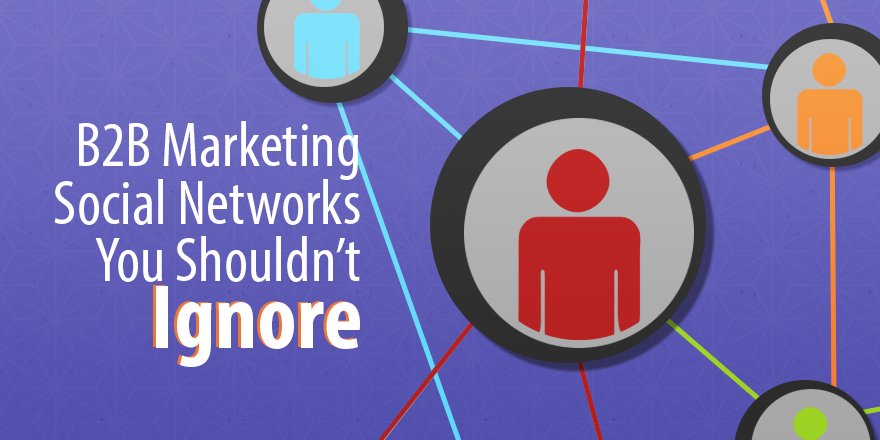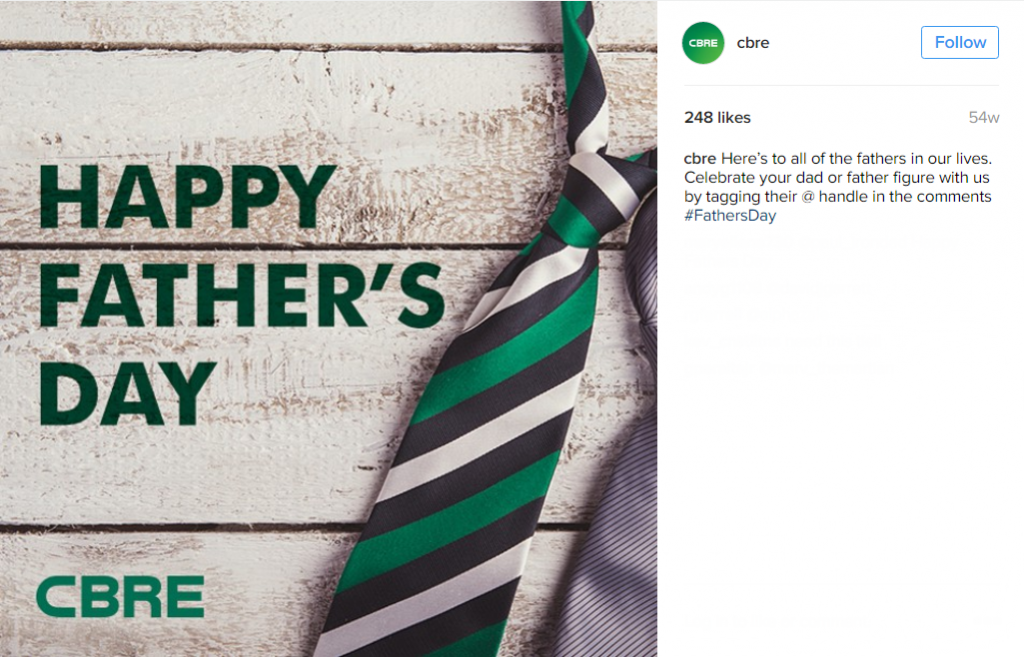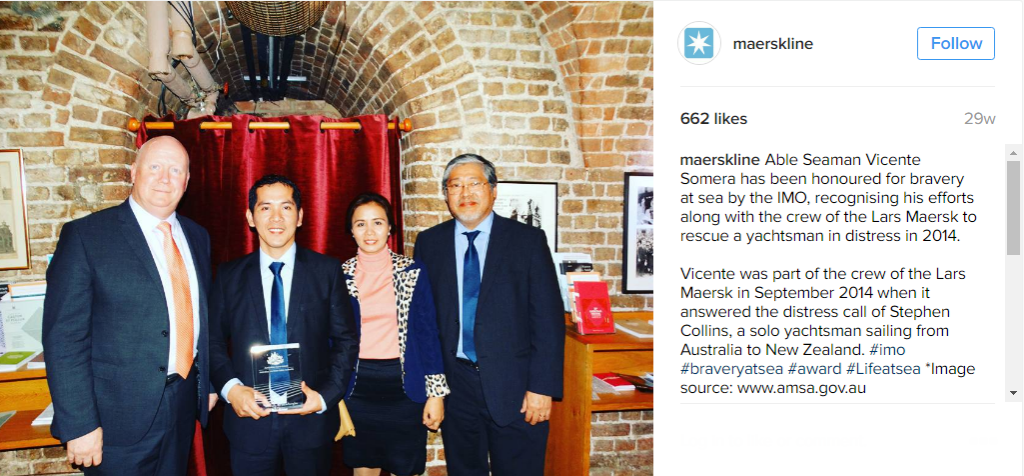This article was originally published by Andrea Panno in Capterra.
The proliferation of social media in the mid-2000’s has reprioritized the channels sellers use to communicate with buyers. For B2B companies, social media has altered the traditional sales cycle, as the networks continue to influence company reputations and ultimately, buyer purchase decisions. This “from social to sale” phenomenon begets the need for B2B companies to embrace all social networks, including those that may seem second-tier to that of LinkedIn and Twitter.
Marketers have always placed a critical eye on the social media networks deemed appropriate for B2B, versus B2C companies – highlighting their different use cases and expectations. However, as we move past the emergence of social networks to the optimization of them, marketers are reviewing years of data to determine which networks are actually most effective, yet underutilized, in a B2B marketplace.
What’s the latest? TrackMaven’s 2016 Social Media Impact Report: B2B Edition revealed how B2B industry leaders are driving value for their brands on social media. The report indicated that biotech, engineering, and financial services brands are in the social media sweet spot, achieving substantial audience growth and high content engagement – but on which channels?
Among the report’s most interesting (and surprising) datasets was the average engagement rate per network for B2B brands.
The social networks with the highest average engagement for B2B brands are, in order from most engagement to least:
With the big reveal out of the way, let’s explore how these three networks are among the most valuable in a B2B marketplace.
Nearly six-years-old and with more than 400-million active users, Instagram has taken brand-image manipulation through visual marketing to new levels.
While many see the B2B marketplace as automated and removed from day-to-day consumerism, Instagram is changing the game by telling a brand’s story. As a result, B2B brands have a lot to gain from Instagram’s ability to humanize brands and promote the moments that ultimately build trust.
According to new research from AdWeek and Real Business Rescue, these three B2B companies maintain the best engagement rates on Instagram:
- FedEx
- CBRE
- Maersk Line
So, what are these companies doing right? They are using these three tactics, smartly and subtly:
1. Generalized Brand Marketing
Smart marketers are using Instagram to demonstrate the benefits of their products and services by showing them in action. These brands use images to tell a story first and sell second. By connecting with their audiences on a real level, these brands’ Instagram posts differentiate themselves from traditional advertising.
Here’s an example from FedEx:
2. Hashtags for the Win
Unlike other social networks, Instagram’s search bar is used exclusively for hashtags. B2B brands who are successful on Instagram tap into national observances and global holidays to join the conversation, using five hashtags per picture as a best practice to avoid looking “spammy.”
Here’s an example from CBRE:
3. Community and Culture
A medium meant for showing off a company’s culture and community engagement, Instagram allows B2B companies to humanize and add life to their brands. Showcasing a vibrant workplace is not just helpful for the recruitment of top talent in your industry, but for employee retention.
Below is this example by Maersk Line, that proudly highlights a courageous accomplishment of its team member as well as demonstrates the company’s keen involvement within the industry. Consider how your team members are participating in your industry and take a moment to showcase their accomplishments. Bonus: this type of recognition is also helpful for employee retention!
It is no secret that Pinterest has yet to catch on with B2B marketers. In fact, TrackMaven reports that only one in four marketers use the channel for content distribution. More than just a statistic, this is a missed opportunity.
Don’t let wedding planning and DIY content fool you. At its core, Pinterest is fundamentally designed for data sharing. Smart B2B marketers use Pinterest to publish, share, save, and comment on content that provides B2B buyers with additional information they need to guide them from awareness to consideration in the buyer’s journey.
So how should B2B companies leverage this content publishing and sharing goldmine? Let’s take a look at how some of the most active B2B companies on Pinterest, including IBM, Oracle, HP, Microsoft, Marketo, and Cisco, are using the platform:
1. Infographics
Pinterest is already optimized for long, tall graphics, so create a dedicated board, just like Oracle:
2. Blog Posts
Create a board to aggregate all blog posts, using the imagery as photo pins, like Marketo does on their page:
3. Industry Tips
Use text-over-image formatting to turn tips into “pinnable” images, like Cisco:
4. Inspiration
Fun quotes and ideas from other industry influencers add personality to any brand. Take notes from IBM’s board:
Finally, we come to Facebook. Notoriously effective in the B2C marketplace, Facebook has also made significant strides among B2B marketers, achieving an 89% adoption rate. With such a high adoption rate, you might be asking yourself why Facebook is considered to be a questionable network. B2B marketers are still skeptical of Facebook’s ability to impact ultimate success measurements, including conversion rates and ROI. Here are the secrets to finding success on Facebook as a B2B brand.
Build Your Fan Base
A company can have the best content and social strategy in the world, but without an audience, that content has no impact. To grow your audience, consider running a contest or promotion that asks people to like your Page in exchange for a targeted and valuable incentive.
Capture Leads
Use every available opportunity to capture contact information from your Page visitors. This might be promoting a subscription to an email newsletter, or driving visitors to a gated whitepaper that requests their contact information before viewing or downloading.
Close the Loop
As you capture leads from Facebook and add them to your CRM platform, be sure to indicate which contacts were obtained via Facebook. By identifying the origin of each lead, you can begin to close the loop on what areas of your marketing program are working versus those that are not performing as well.
Share Engaging Content
Social engagement (sharing, commenting, and liking) is the on-Page success measurements of your content. By posting relevant photos, videos, or eBooks to your Page, your company can drive engagement and ultimately drive effective two-way conversations.
Another great tip for gaining leads and ultimately ROI from Facebook marketing is to take advantage of the call-to-action buttons that are available for business pages. Consider the popularity and click-through-rates for each button type and consider implementing the best ones for your company.
Facebook, after all, is a social network and so being “social” with your following is an important piece of the puzzle!
Conclusion
“Social media marketing for B2B companies has proven to be a highly effective tactic, especially when reinforced by a tightly integrated marketing program that spans all channels,” says Mark Schmukler, Co-Founder, Managing Partner and Brand Strategist, Sagefrog Marketing Group. “More recently, Instagram, Pinterest, and Facebook have released functionalities that are not only more conducive to B2B audiences, but designed to integrate with other channels such as paid advertising and email marketing.”
As you develop your B2B marketing strategy, consider all of the benefits that social media has to offer, including the platforms that are not as obvious as Twitter or LinkedIn. Additionally, when measuring their success, first be sure that your implementation tactics are B2B, not B2C-focused, and second, consider a key success measurement to be engagement rate, not just direct sales.
Which B2B social networks do you use to market your software? What results have you seen? Share your experiences in the comments below.
Did you find these tips helpful? Here are other resources you might enjoy!
- Creating the Perfect LinkedIn Company Page
- Twitter Introduces Better Targeting with New Ad Groups Tool
Are you interested in social media or other B2B marketing services? Contact Sagefrog Marketing Group today.










